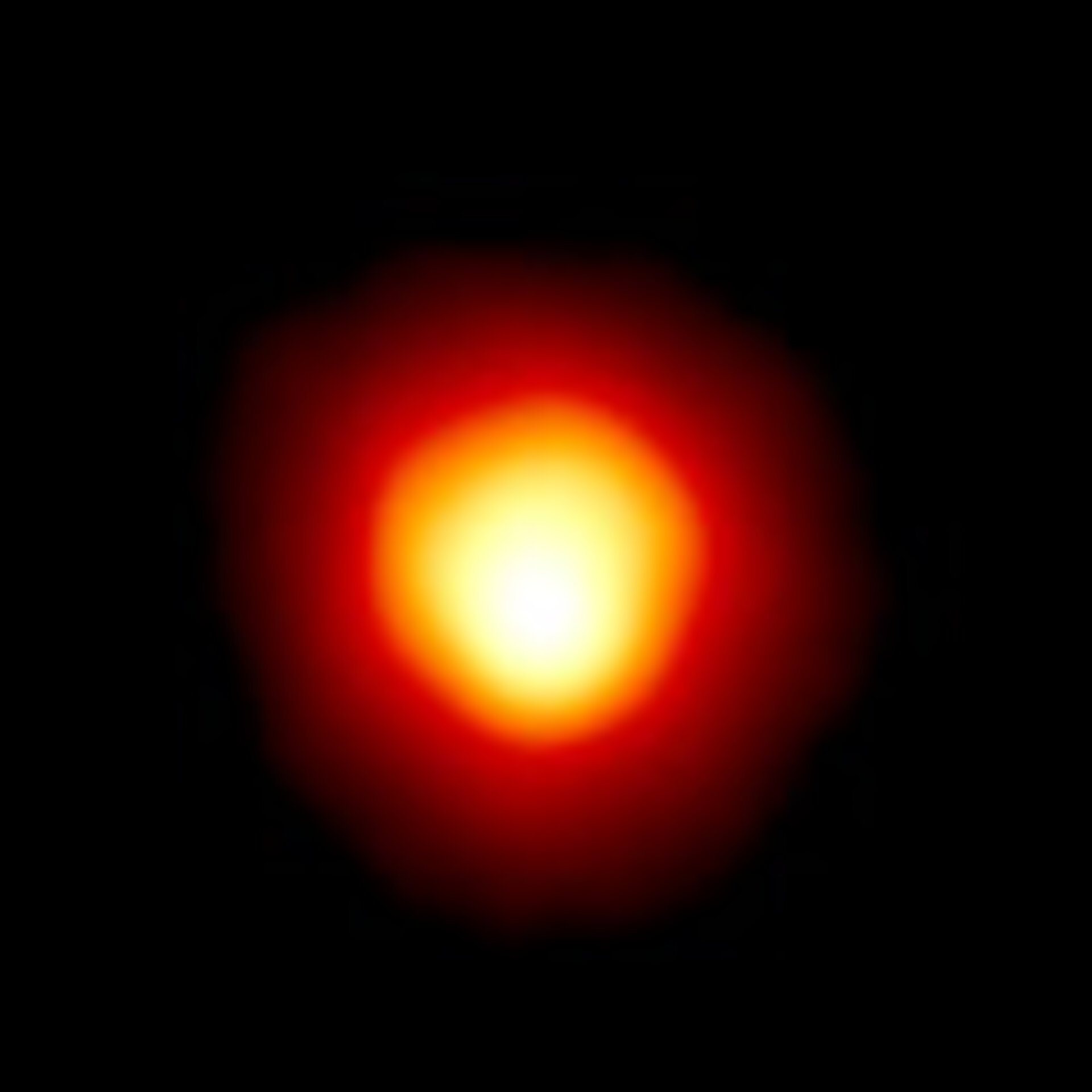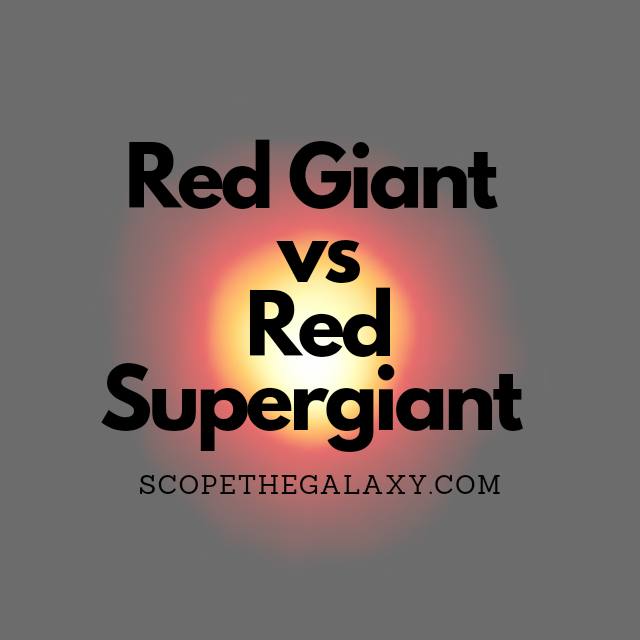*This post may contain affiliate links. This means we may make a commission if you purchase an item using one of our links*
Red giants and Red supergiants are both the final forms before stars become the dead remnant stars, where the smaller red giants become white dwarfs and the larger red supergiants will experience a supernova explosion, becoming either a neutron star or a black hole once the explosion settles down.
Continue reading for a more detailed description on both celestial bodies along with the similarities and differences between the two.
What Is A Red Giant?
Table of Contents
A red giant is a star reaching the end of its life and entering the last stages of its evolution. The majority of stars in our Universe are known as main-sequence stars – or those which utilize nuclear fusion to convert hydrogen to helium.
During its ordinary life, the inward pressure of gravity is balanced by the outward pressure of nuclear fusion, which holds the mass together. But, when fusion ceases, the force of gravity exceeds the pressure of fusion, and the star begins to compress.
As this happens, it increases the temperature inside the star and ignites a burning hydrogen shell. The helium core continues to shrink while its temperature increases – and this gives energy to the hydrogen shell, which increases in luminosity as it continues to expand.
A red giant will grow 100 to 1000 times wider than the size of our sun, giving it a total width of somewhere between 100 million to 1 billion kilometres. And it’s this vast surface area that keeps the temperature relatively cool – 2,200 to 3,200 degrees Celsius.
Our sun will turn into a red giant in around five billion years. At this point, the sun will engulf the inner planets as it expands.
What Is Red Supergiant?

A red supergiant is simply a red giant but significantly bigger. They’re all formed when a main sequence star is unable to convert hydrogen to helium therefore, the natural process of nuclear fusion begins fusing heavier elements causing the star to exponentially increase in size.
These are by far the biggest stars in our universe, in terms of size but, when it comes to mass, as they are continuously shedding weight they’re not the heaviest. Betelgeuse is one such red supergiant which is situated extremely close to Earth, only a short 700 light years away.
This star is roughly 900 times the size of our Sun which would make it around 1.23 billion kilometres in diameter. When put into perspective this distance is almost the distance that separates Earth from Saturn. Saturn is roughly 1.51 billion kilometres away from us so super redgiants, with betelgeuse in particular, are simply unfathomable when it comes to size.
Due to their gargantuan size and initial life of stars that were still significantly bigger than our Sun (which is theorised to bloat to roughly 256 times its current size in it red giant phase), it would make mean that Betelgeuse was roughly 4.8 million kilometres in diameter when it could actively convert hydrogen.
Betelgeuse as a supergiant is also a very likely candidate to experience a supernova explosion. Supernovae require stars that are at least 1.44 solar masses in size, whereas this star is 16.5 – 19 solar masses.
Most supergiant will be between 10 – 70 solar masses, making Betelgeuse on the lighter end of the spectrum. It’s also far from the biggest too, with a supergiant called UY Scuti 1700 times the size of our Sun and roughly twice as big as Betelgeuse.
Therefore, it’s almost guaranteed that Betelgeuse, among other red supergiants, will experience a supernova explosion and become either a neutron star or black hole, based on if the materials left after the explosion amount to 3+ solar masses or not.
Similarities Between Red Giants And Super Red Giants
Red giants and supergiants are both process that a star follows once it is unable to convert hydrogen to helium through nuclear fusion. This stops the balance between the inward force of gravity and outward force of nuclear fusion. Once nuclear fusion is unable to maintain balance with gravity, it causes the star in question to expand exponentially in size.
Once the phase is complete both entities will leave behind dead stellar remnants like white dwarfs, neutron stars or a black holes.
Differences Between Red Giants And Super Red Giants
In many ways red giants and red supergiants are born from the same circumstances however, the differences they showcase are quite prevalent.
These differences would include the following:
- Supergiant are exponential bigger than a red giant with largest one we know 1700 times the size of our Sun. When our Sun becomes red giant it’s theorised to bloat up to around 256 times its initial diameter meaning most supergiants will be 3 – 8 times bigger than a star roughly 1 solar masses like our Sun.
- Supergiants are extremely bright where Betelgeuse is literally the 10th brightest star in our night sky. For reference the Sun has a luminosity of +1. A Red giant will typically fall between -1 and -3 whilst supergiants will be between -5 to -8. What this means is that red giants are 14,000 times more brighter than the Sun and supergiants are 2 – 3 times that.
- Red giants will burn at around 2,200 – 3,200°C whilst supergiants can range from 3,100°C to upwards of 19,000°C.
- As supergiants have more mass than red giants, their lifespan in turn is shorter too, where they will typically exists for around 10 – 50 million years. Red giants on the other can remain alive between 100 million – 2 billion years.
- Due to the significant mass of supergiants, they will always die in a supernova explosion whilst a normal red giant will slowly shed away in a process called planetary nebula.
- A red giant’s remnant will be a white dwarf whilst supergiants can become either neutron stars or black holes based on the mass of the materials remaining after the supernova, hypernova etc.
Summary
Both are phases that a large number of star will experience when reaching the end of their lifespans. The only reasons both are classified under different brackets is down to their initial. Smaller stars like the Sun will become red giants and those 4 – 10 times the mass of the Sun will become red supergiants.
The lifespan of each celestial body, the remnants of dead the stars that remain, the luminosity and of course mass and size are significantly different between the two. Nevertheless, both are precursors to the death of a stars, caused by nuclear fusion being unable to convert hydrogen to helium.

